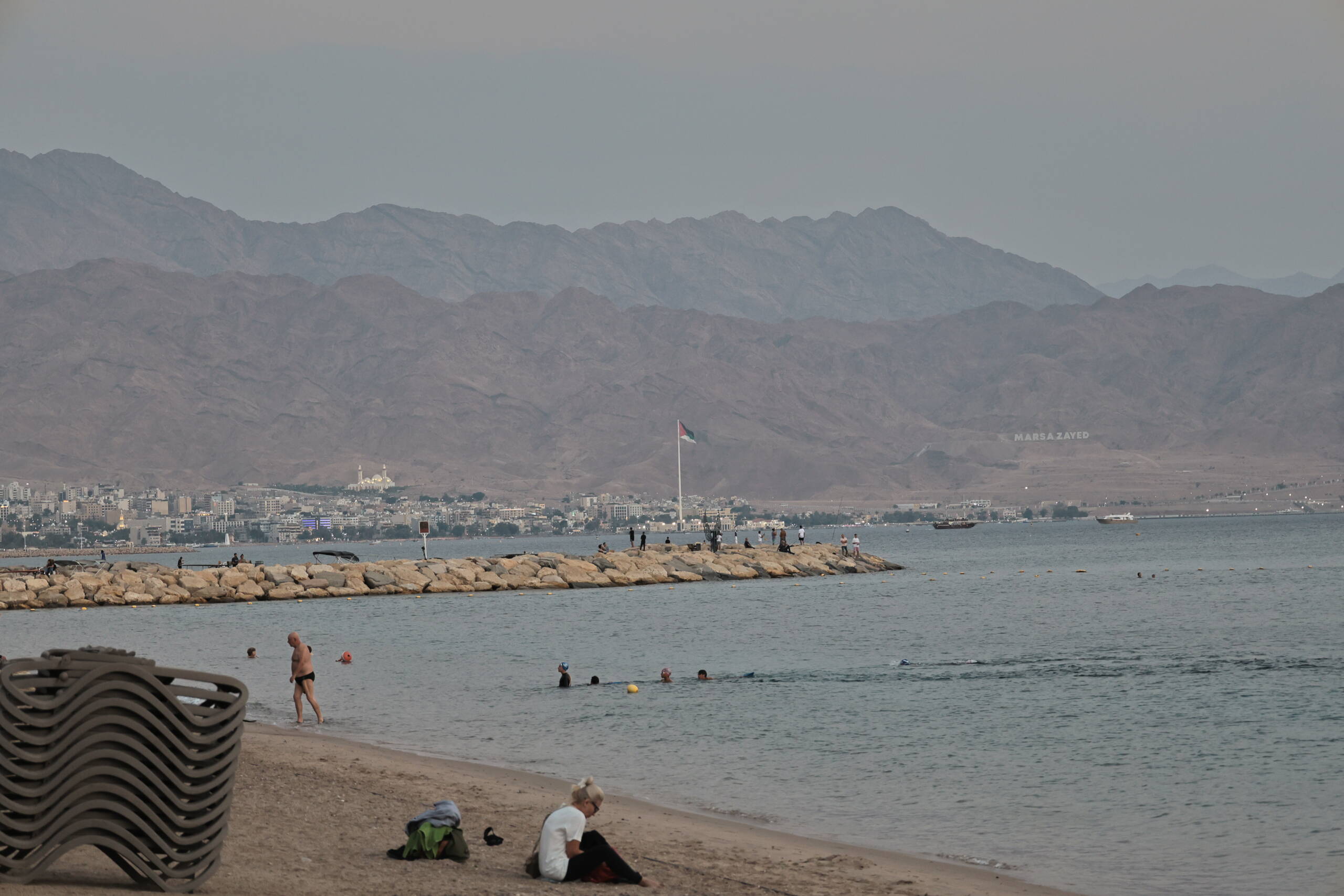From the quiet stretch of Eilat’s beach, where swimmers drift lazily between the buoys and someone sits cross-legged in the sand with the kind of unhurried posture you fall into only on vacation, your eye inevitably wanders across the water to a single, impossible vertical line rising from Aqaba. It looks almost surreal against the raw, folded desert mountains — that enormous Jordanian flagpole, the one so tall it seems to stitch the coastline to the sky. At first glance it’s just a landmark, a piece of the skyline. But the more you look, the more you realize it isn’t just a flagpole at all. It’s a monument.

The structure stands at the Great Arab Revolt Plaza, marking one of the historic turning points of the Middle East — the 1916 Arab Revolt against Ottoman rule, led by Sharif Hussein bin Ali. The flag that flies there isn’t only Jordan’s national colors; it carries the symbolism of a much older, deeper narrative. Erected in 2004 and soaring roughly 130 meters high, the pole was designed to be seen from across borders. And it is — from Israel here in Eilat, from Egypt a bit further along the gulf, even from Saudi Arabia on clearer days. It has that deliberate monumental presence, the kind that quietly announces: we are here, and our history matters.
And honestly, that context changes the whole feeling of the shoreline. On the Eilat side, you’ve got the casual beach scenes — someone drying off, a couple of snorkelers bobbing out in the water, the gentle hum of a seaside city that runs on resorts, not revolutions. Then your gaze jumps across the blue and lands on a national narrative carved into steel and wind. It’s subtle, but the contrast leaves its mark. You sit there listening to the soft break of the waves and, without meaning to, you start thinking about how rare it is to see two countries’ stories unfold in the same single frame.
Aqaba spreads out behind the flag with its minarets and low-rise density, and above it the pale brown mountains carry the “MARSA ZAYED” lettering like a future development pitched to the horizon. Everything over there feels both grounded in history and stretched toward tomorrow. Everything on this side feels suspended in a slower, quieter present. Between them runs the water — not really separating much at this distance, just reflecting whichever way you choose to look.
And maybe that’s what makes that flagpole such an unexpectedly powerful part of the view. It anchors not just Aqaba, but the entire experience of the gulf. From a simple afternoon on the sand in Eilat, you’re suddenly watching a monument to a century-old revolt wave gently from across the border, reminding you that even the calmest seascapes carry long stories beneath the surface.
Leave a Reply